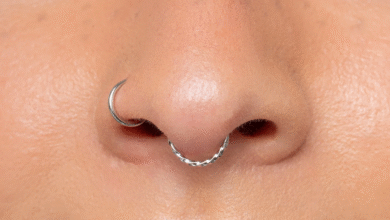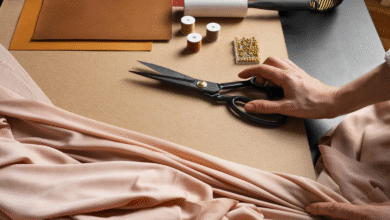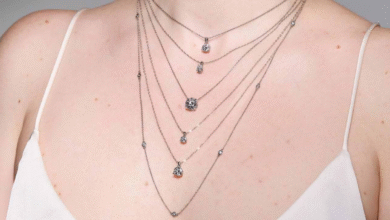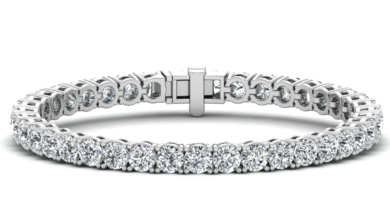Nose Piercing: Style, Symbolism, and the Modern Meaning Behind This Timeless Trend

Discover the beauty, culture, and meaning behind nose piercing — from ancient traditions to modern fashion. Learn about styles, healing, jewelry choices, aftercare, and expert advice for a perfect piercing.
The Timeless Appeal of Nose Piercing
Nose piercing has traveled through centuries, carrying stories of identity, faith, and personal expression. Today, it’s more than just a fashion statement — it’s a bridge between culture and individuality. From ancient Indian traditions to contemporary self-expression in the West, the nose piercing represents beauty, freedom, and a subtle touch of rebellion.
The practice dates back thousands of years, mentioned in historical texts and depicted in art across Asia, Africa, and the Middle East. Whether it’s a tiny diamond stud or a bold septum ring, the nose piercing has evolved while maintaining its symbolic roots. It continues to thrive because it reflects both cultural legacy and personal empowerment.
Cultural Origins and Symbolism of Nose Piercing
Historically, nose piercing has deep cultural meaning, especially in regions like India, Nepal, and parts of Africa. In Indian culture, a nose stud or ring often signifies marriage, fertility, and feminine strength. It is typically worn on the left nostril, aligning with Ayurvedic beliefs that associate this side with reproductive health.
In African and Middle Eastern cultures, nose jewelry symbolized social status and wealth. Among the Berber tribes of North Africa, for example, the size and design of the nose ring represented a woman’s family wealth. Over time, this symbolism transitioned from a social marker to an intimate form of adornment.
Even in modern times, many still view nose piercing as a rite of passage — a physical manifestation of maturity, independence, or spiritual awakening. It remains a ritual that transcends fashion and touches identity itself.
The Evolution of Nose Piercing in Modern Culture
The resurgence of nose piercing in Western fashion began during the counterculture movement of the 1960s and 1970s. Punks, hippies, and artists adopted it as a symbol of rebellion and non-conformity. For many, piercing the nose was not just about aesthetics; it was a statement of freedom from societal norms.
Today, the meaning of nose piercing has shifted once again. It’s now a mainstream fashion choice celebrated by celebrities, influencers, and everyday people. From minimalistic studs to intricate septum jewelry, it’s embraced across genders and ages. Modern wearers blend traditional designs with new-age creativity, creating a perfect harmony between heritage and individuality.
Different Types of Nose Piercings
There’s a wide variety of styles when it comes to nose piercing — each with its own placement, healing process, and vibe. Here’s a detailed look at the most popular types:
| Type of Nose Piercing | Location | Vibe/Style | Healing Time |
|---|---|---|---|
| Nostril Piercing | Side of the nose | Classic and versatile | 4–6 months |
| Septum Piercing | Between the nostrils | Edgy and bold | 6–8 months |
| Bridge Piercing | Across the bridge of the nose | Modern and unique | 8–10 months |
| High Nostril | Higher up on the nostril | Elegant and subtle | 6–9 months |
| Nasallang | Through both nostrils and septum | Rare and striking | 9–12 months |
Each piercing carries a different statement. A nostril piercing is timeless, while a septum piercing often embodies creativity and defiance. The bridge and nasallang styles are rare and artistic, appealing to those who want to stand out.
Choosing the Right Jewelry for a Nose Piercing
Selecting the perfect jewelry is essential to both aesthetics and comfort. The most popular choices include studs, hoops, L-shaped pins, and seamless rings. Materials like surgical steel, titanium, gold, and platinum are ideal because they minimize the risk of irritation or infection.
For a traditional look, many opt for a small gemstone stud. If you prefer a minimalist vibe, a thin hoop adds sophistication without drawing too much attention. Those who enjoy a bold look can explore ornate designs or colored gemstones that express personality and style.
It’s also important to consider lifestyle. Athletes, for instance, may find flat studs more practical, while those in creative industries might lean toward more artistic designs. In every case, jewelry should reflect both your comfort and your character.
The Nose Piercing Process Explained
The process of nose piercing is relatively quick but requires expertise and hygiene. A professional piercer will first sanitize the area, mark the exact point for placement, and use a sterilized needle for the piercing. The jewelry is inserted immediately after.
The entire procedure typically lasts only a few minutes. A slight sting or tear might occur, but the discomfort fades quickly. What matters most is ensuring your piercer uses sterile tools and high-quality jewelry, as improper techniques can lead to infection or uneven placement.
Many studios also offer aftercare instructions right after the procedure, emphasizing cleanliness and consistency. Following these steps ensures smooth healing and a perfect final result.
Understanding the Healing Stages
Healing varies depending on the type of nose piercing, jewelry material, and personal health. Initially, mild redness and swelling are normal. Over the next few weeks, the tissue begins to close around the jewelry, forming a protective barrier.
During healing, avoid touching the piercing with unwashed hands. Use saline solutions instead of alcohol-based products, as harsh chemicals can delay recovery. Over time, the tenderness fades, and the piercing stabilizes. Full healing may take from three months to a year, depending on the piercing type.
It’s essential not to change jewelry too soon. Premature removal can irritate or tear the healing tissue, prolonging the process. Patience is the key to a lasting, flawless piercing.
Aftercare Tips for Healthy Healing
Aftercare determines how well your nose piercing heals. The simplest rule is: keep it clean, keep it dry, and avoid unnecessary contact. Clean the area twice daily with sterile saline spray or a homemade salt solution.
Avoid makeup, lotions, or oils near the piercing. These can clog pores or introduce bacteria. During showers, let clean water run over the piercing, but don’t soak it in pools or hot tubs for at least a few weeks.
If irritation occurs, resist the urge to twist or remove the jewelry. Instead, consult your piercer for guidance. Proper aftercare not only promotes healing but also prevents complications like bumps, keloids, or infections.
Possible Complications and How to Handle Them
Even with proper care, complications can occasionally occur. The most common include swelling, discharge, bumps, or infection. These are often minor and temporary if addressed early.
If the area becomes unusually red, painful, or produces pus, it’s important to seek professional advice immediately. Avoid self-treating with alcohol or hydrogen peroxide, as these can damage the delicate tissue. A clean, consistent routine paired with professional supervision ensures a smooth recovery.
Remember — every body heals differently. Patience, care, and attention will always deliver the best result.
The Psychology of Nose Piercing
Nose piercing isn’t just about beauty; it’s deeply psychological. For many, it represents control over one’s body and identity. In a world filled with expectations, getting a piercing is often an act of self-assertion — a small yet powerful statement of individuality.
Others view it as an emotional milestone. Some people mark a breakup, graduation, or life change with a piercing. It serves as a physical reminder of personal growth, transformation, or liberation. This emotional connection explains why nose piercing feels more meaningful than other forms of adornment.
Cultural and Religious Perspectives
Religious and cultural interpretations of nose piercing are fascinating. In Hindu culture, it’s linked to the goddess Parvati, symbolizing marriage and feminine power. In Islamic tradition, nose piercing is sometimes seen as modest adornment, acceptable within certain cultural contexts.
In Western culture, it’s now free from religious connotation, adopted purely for personal or aesthetic reasons. This global blend of meanings adds depth to its modern appeal. The same small piece of jewelry can mean spirituality to one person and self-expression to another.
Celebrity Influence on the Nose Piercing Trend
The rise of nose piercing in pop culture owes much to celebrities who wear it confidently. From Madonna’s iconic stud to Rihanna’s elegant septum ring, famous figures have redefined the image of nose jewelry. They’ve shown that it can be both edgy and refined, rebellious yet elegant.
Social media platforms like Instagram and TikTok further amplify this trend. Influencers share healing journeys, jewelry inspiration, and styling ideas, making nose piercing more accessible and normalized. It’s no longer taboo — it’s a form of curated self-art.
How to Style and Complement a Nose Piercing
Styling your piercing depends on your face shape, skin tone, and personal aesthetic. Those with angular features may prefer hoops to soften their appearance, while individuals with softer features often choose studs for a balanced look.
Jewelry color also matters. Gold adds warmth, silver offers neutrality, and rose gold introduces modern romance. Pair your piercing with earrings or layered necklaces to create a cohesive style. The goal is harmony — to let the piercing enhance your natural beauty rather than dominate it.
The Role of Nose Piercing in Gender Expression
Traditionally associated with femininity, nose piercing has become a unisex trend embraced by all genders. Men often prefer septum or bridge piercings for a bolder, structured look, while women may choose daintier studs or hoops. However, these distinctions are fading as personal expression transcends gender norms.
In many ways, nose piercing reflects modern ideas of fluid identity — the freedom to express oneself beyond societal boundaries. It celebrates self-confidence and authenticity, regardless of gender identity or cultural background.
Pain Level and Tolerance
Pain is a subjective experience, but nose piercing typically ranks low on the discomfort scale. Most people describe it as a sharp pinch followed by slight watering of the eyes. The sensation is brief, and recovery begins immediately afterward.
The level of pain also depends on the piercer’s skill and the specific area of the nose. Septum piercings, for example, can feel slightly more intense than nostril piercings. A calm environment, deep breathing, and a professional hand make the process smooth and manageable.
Cost and Professional Considerations
The cost of a nose piercing varies depending on location, jewelry material, and piercer experience. On average, it ranges from $40 to $100, with premium studios charging more for higher-quality jewelry and sanitation standards.
Never compromise on safety for a lower price. Professional studios use sterile, single-use needles and offer quality aftercare instructions. Choosing a certified piercer minimizes risks and ensures aesthetic precision.
Modern Innovations in Nose Piercing Jewelry
Contemporary jewelry designers constantly innovate with shapes, textures, and gemstone placements. From minimal diamond studs to intricate filigree rings, there’s endless room for creativity. Magnetic, clip-on, and invisible retainers also exist for those who want flexibility without commitment.
Ethical materials are gaining popularity too. Many brands now offer hypoallergenic, nickel-free options that blend sustainability with beauty. These innovations make nose piercing accessible, safe, and stylish for everyone.
Cultural Revival and Global Popularity
In recent years, there’s been a revival of traditional nose piercing styles worldwide. Brides in South Asia, for instance, are reclaiming classic nose rings as symbols of pride and heritage. Meanwhile, Western fashion continues to reinterpret these styles in contemporary contexts.
This cultural crossover shows how universal nose piercing has become. It connects generations, communities, and aesthetics in a single adornment — a perfect blend of old and new, spiritual and fashionable.
Quotes About Nose Piercing and Expression
“Adornment is not vanity; it is identity expressed through beauty.”
— Anonymous
“A piercing is more than metal in skin; it’s a decision, a story, a transformation.”
— Body Art Collective
“The smallest sparkle on the nose can reflect the biggest part of the soul.”
— Modern Body Journal
These reflections capture the emotional and aesthetic weight of a simple yet powerful tradition.
Common Myths About Nose Piercing
Despite its popularity, several myths persist. One common belief is that nose piercing always causes infection — but with proper care, healing is smooth and trouble-free. Another myth suggests the piercing closes instantly if jewelry is removed. In reality, the closure rate depends on healing duration and individual biology.
Some also think nose piercings are unprofessional. However, changing workplace norms have redefined personal expression, making subtle nose jewelry widely accepted even in corporate settings.
Frequently Asked Questions
Is nose piercing painful?
Most people describe it as a mild pinch. The discomfort is brief and fades quickly.
How long does a nose piercing take to heal?
It usually takes three to nine months, depending on the location and aftercare routine.
Can I change my nose jewelry early?
No, you should wait until the piercing is fully healed to prevent irritation or tearing.
Is it safe to get a nose piercing at home?
It’s not recommended. Professional piercing studios follow sterilization standards that prevent infection and uneven placement.
What should I clean my piercing with?
Use a saline solution or sterile saltwater. Avoid alcohol, hydrogen peroxide, or strong antiseptics.
Can I swim after getting my nose pierced?
Avoid pools, lakes, and hot tubs for at least four weeks, as bacteria in water can cause infection.
Does nose piercing leave a scar?
A small mark may remain if jewelry is removed, but it’s usually minimal and fades over time.
What side should I get pierced on?
Traditionally, the left side is common in Indian culture, but the choice depends entirely on your preference.
Can I wear makeup around my piercing?
Avoid applying makeup directly on or near the piercing during healing to prevent irritation.
Is nose piercing suitable for sensitive skin?
Yes, as long as you choose hypoallergenic materials like titanium or surgical steel.
Conclusion: The Enduring Beauty of Nose Piercing
Nose piercing stands at the crossroads of culture, art, and individuality. It’s a subtle yet powerful form of self-expression that connects people across time and geography. Whether it’s worn for tradition, fashion, or emotion, it tells a story — one that’s deeply personal and universally human.
From ancient rituals to red-carpet appearances, the appeal of nose piercing remains timeless. It continues to evolve, inspire, and symbolize something greater than aesthetics: the freedom to express oneself authentically and beautifully.





